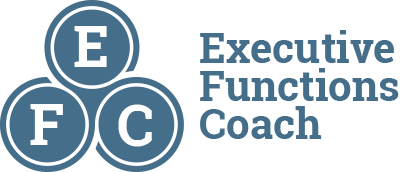Inattentive ADHD & Executive Functions: Strategies for Improvement
Inattentive ADHD is often misunderstood, particularly when it comes to its impact on executive functions. Unlike the more commonly recognized hyperactive-impulsive ADHD, predominantly inattentive ADHD symptoms manifest in more subtle ways, making it harder to diagnose. Individuals with this type of ADHD frequently struggle with concentration, focus, and staying organized—hallmarks of executive function challenges. These symptoms are often mistaken for sluggish cognitive tempo, a condition characterized by daydreaming, mental fog, and lethargy. Recognizing inattentive ADHD early on can make a significant difference in managing these symptoms effectively.
Ella’s Journey: ADHD & Executive Function Challenges
Ella’s story is a prime example of how inattentive ADHD can significantly impact daily life, particularly when it comes to executive functions. Diagnosed in her early 20s, Ella had long struggled with forgetfulness, chronic lateness, and missed appointments—all classic signs of predominantly inattentive ADHD. Her inability to stay organized and on task often led to burnout, exacerbated by what many might describe as sluggish cognitive tempo. Despite her accomplishments, including a degree in business administration and a successful career, Ella found herself overwhelmed by the demands of her daily life. She was constantly stuck in a cycle of highs and lows with her productivity and motivation. Her inattentive ADHD was beginning to affect her mental health and relationships.
The Turning Point: How Recognizing Predominantly Inattentive ADHD Changed Everything
The diagnosis of inattentive ADHD was a revelation for Ella, offering clarity about the struggles she had faced for years. Understanding how her predominantly inattentive ADHD affected her executive functions allowed her to take control of her life in ways she hadn’t imagined. It was no longer a mystery to why she couldn’t initiate tasks and felt overwhelmed by what initially interested her. Ella began working on strategies to manage her sluggish cognitive tempo, focusing on improving her executive functions. This shift in perspective was critical for Ella; no longer did she see herself as inadequate but rather as someone dealing with a recognized condition. The concept of sluggish cognitive tempo helped her better understand why she felt so mentally slow and overwhelmed.
Strategies for Coping with Inattentive ADHD and Executive Function Challenges
Ella’s journey toward managing her predominantly inattentive ADHD symptoms started with focusing on metacognition—a strategy that involves reflecting on one’s thought processes and behaviors. Through metacognitive reflection, Ella was able to identify her obstacles and create meaningful solutions to them like time blocking. This led her to set realistic goals and track her progress, avoiding the pitfalls of sluggish cognitive tempo. For her, this meant creating plans that were achievable and sustainable. Regular reflection on her progress helped her avoid the mental burnout that often accompanies repeated failure. One of the most effective strategies was developing consistent self-regulation techniques to manage anxiety and improve her focus. Slowly but steadily, she was making great progress with her inattentive ADHD.
Additional Strategies to Combat Sluggish Cognitive Tempo
In addition to coaching and metacognition, there are several other strategies we worked on to help Ella manage her sluggish cognitive tempo (SCT) associated with inattentive ADHD. One approach is to establish a structured daily routine, which can help reduce mental fog and increase productivity. Ella created what she thought would be an ideal morning routine with her reasons why. Each morning, she reflected, adjusted, and discussed them with her coach. Starting out her morning on the right foot gave Ella the momentum to overcome the symptoms of her inattentive ADHD throughout the day.
Next, we incorporated regular physical activity into her routine as a valuable strategy to combat the symptoms of predominantly inattentive ADHD. Exercise has been shown to enhance cognitive function and improve focus. It also decreased the consistent “antsiness” that Ella experienced throughout the day.
Another strategy that helped a lot was mindfulness and meditation practices. Research has shown that it can be beneficial in calming the mind and increasing cognitive awareness. What Ella found really helpful was using mindfulness to help her calm down from the highs of productivity. One of the common experiences with inattentive ADHD is a need to capitalize on any sense of productivity. Unfortunately, this usually results in burnout. This coupled with breaking tasks into smaller, manageable steps reduced Ella’s overall overwhelm, making it easier to stay on take breaks while staying on track.
The Role of Coaching in Managing Inattentive ADHD
Coaching can play a vital role in helping individuals like Ella manage their predominantly inattentive ADHD and its impact on executive functions. Through personalized sessions focused on metacognition, goal setting, and accountability, coaching provided Ella with the tools she needed to navigate the challenges of her sluggish cognitive tempo. Addressing issues like motivation to initiate tasks was key to her progress. With the right support, Ella learned to manage her symptoms more effectively, reducing anxiety and improving her ability to stay organized and focused. Her experience underscores the importance of tailored strategies and consistent support in overcoming the challenges of inattentive ADHD.
Ready to take control of your inattentive ADHD? Schedule a consultation today!


